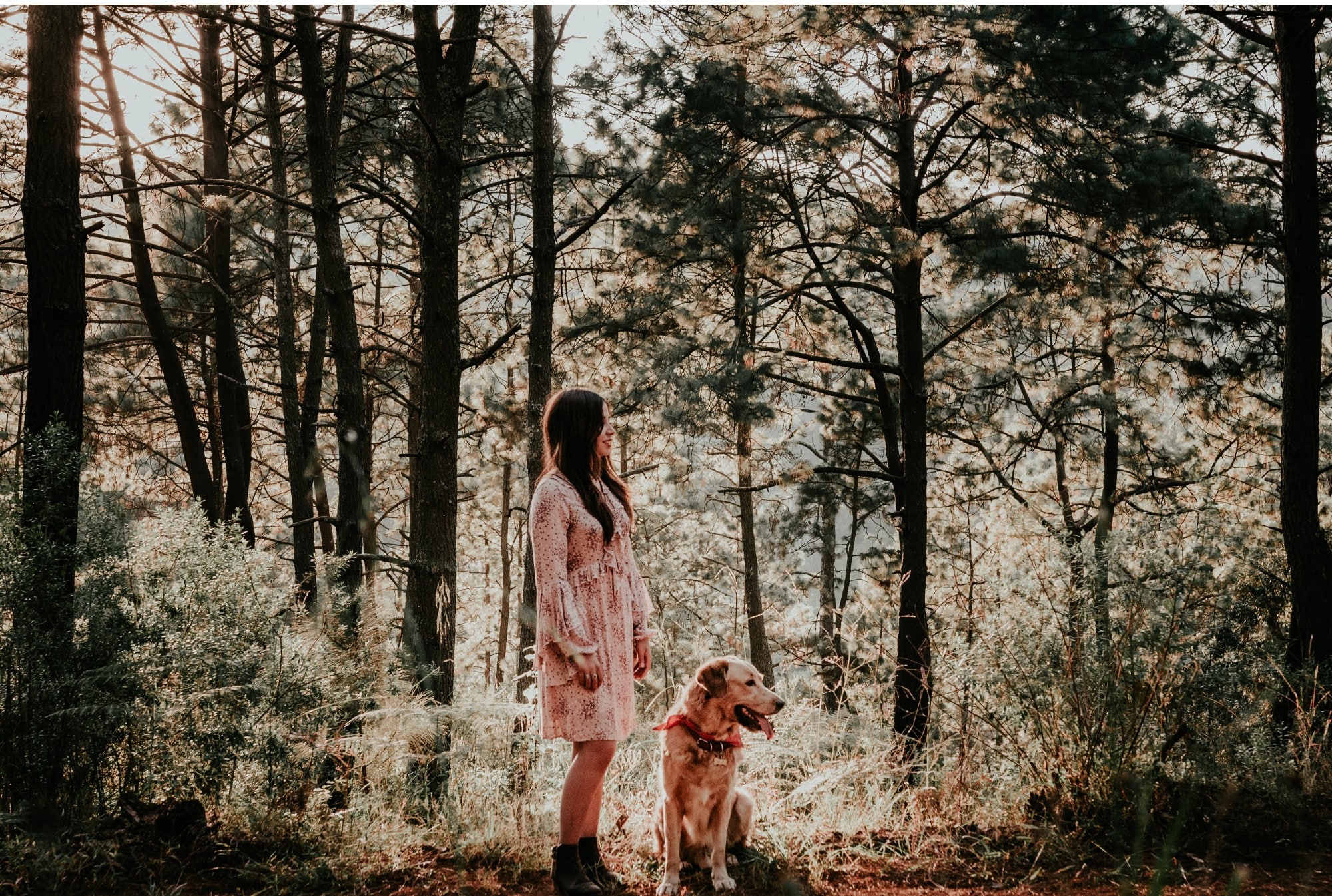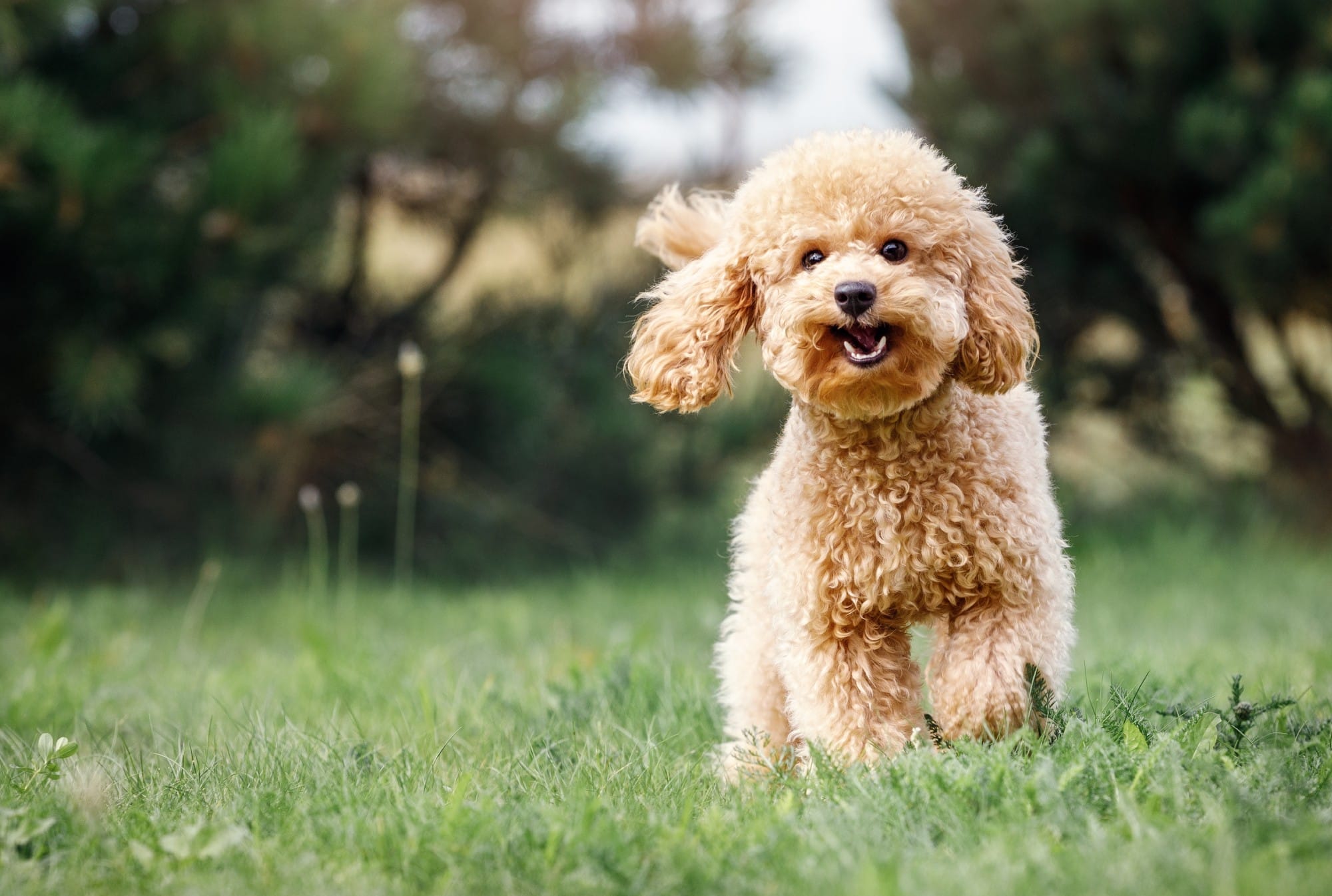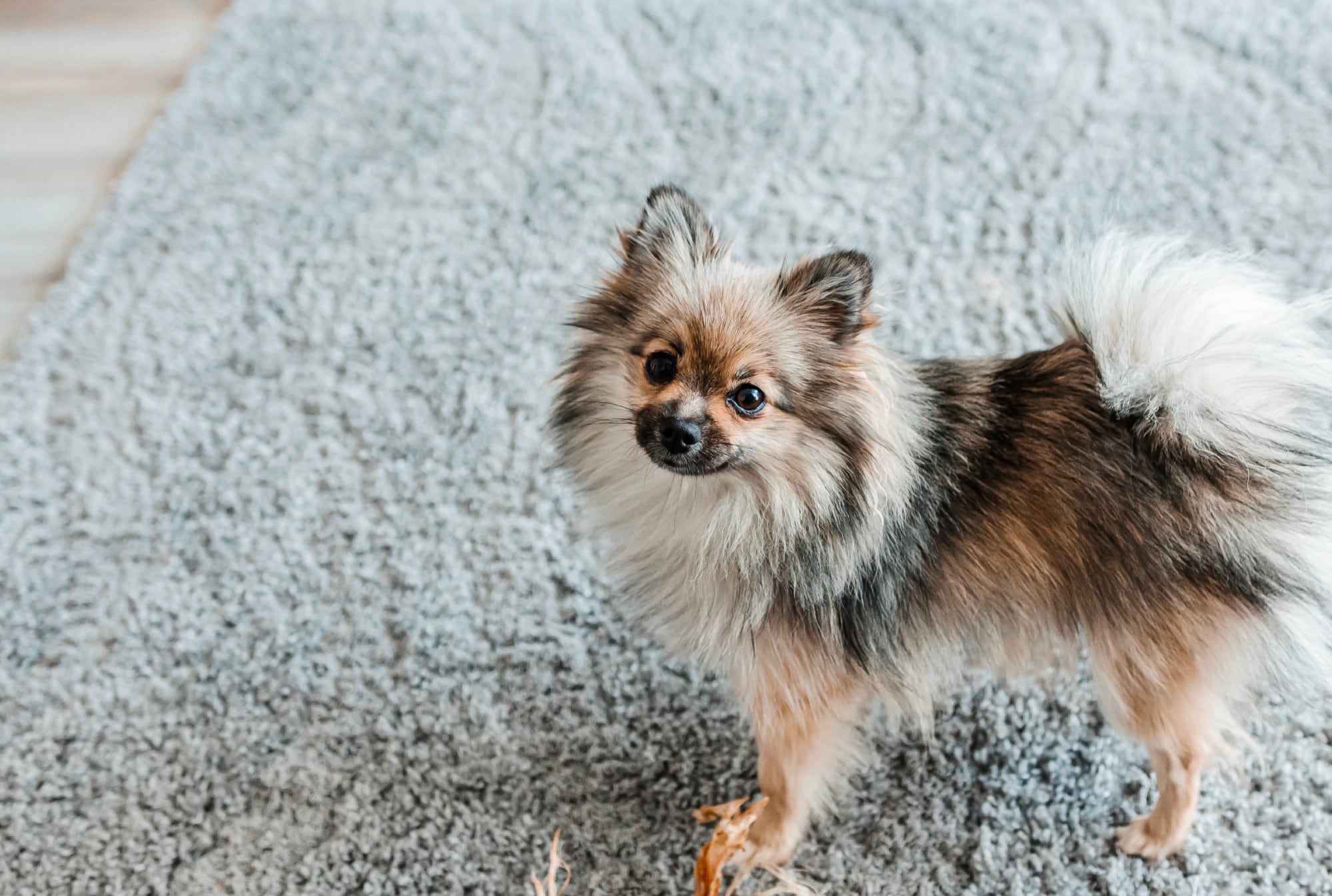Training your dog should be a fun, interactive experience — but you will only get positive results if you know what you’re doing.
There are different methods of training a dog. The most successful in terms of ending up with a happy, well-adjusted pup are methods that rely on positive reinforcement. Decades ago, there was a school of training relying on methods to “dominate” the dog, usually resulting in dogs that are fearful and aggressive. The “alpha dog roll” is an example.
But now, as times and techniques have changed, one of the most innovative training method’s is called game-based dog training, or, as trainer Alexandra Bassett, owner of the Los Angeles-based dog training company, Dog Savvy Los Angeles, calls it, “learning through games of choice,” or choice-and-reinforcement-based dog training. “It’s the fastest, most effective, most fun way to train any dog of any age or breed self-control,” she says.

There is one factor that makes this method so effective and unique: “The methodology teaches humans how dogs learn and how to manage their behavior in a positive way, promoting a loving and trusting bond with their dog,” says Bassett. It works because we are not forcing human-based learning techniques on dogs, but rather learning to become fluent in their own learning system.
Based on a system developed by World Champion Dog Trainer Susan Garrett, the training utilizes a dog’s choice to offer a targeted behavior like sit, stay or down by presenting them with problems to solve or choices during the training process, says Bassett. When a dog guesses correctly or offers the desired behavior, they win a reward, which can be either a treat, playtime, or access to something they want.
Related: Why ‘Good’ Dogs Bite and How to Prevent It
When a dog behaves incorrectly, they lose their chance to win a reward; the treat physically disappears, for example, into a closed hand. “This makes the targeted behavior the best and most obvious choice for a dog to make, and strengthens their ability to offer that behavior in a variety of settings and circumstances by incorporating their choice to do so,” says Bassett.
The Method: It’s Your Choice
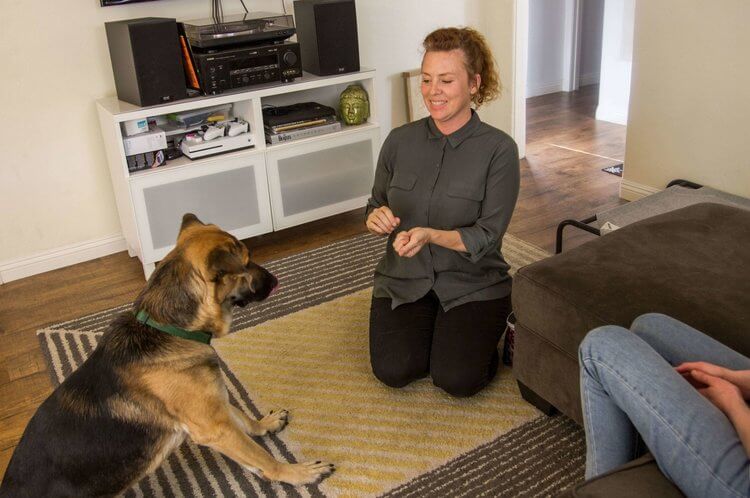
One of the most fundamental skills you can (and should) teach your dog is impulse control. Once they learn how to control their instinctual impulses, like chasing a squirrel, or choice-based impulses, like jumping on a person who is holding a treat, you will be able to achieve an effective recall (or “come”) to stop your dog in a situation where he could get hurt (like chasing a squirrel into the street). What this method does is break down those impulses into small, easier-to-achieve choices
Set up a consistent schedule. Like all dog training, this exercise should be repeated daily, or even better, in short 10 minutes sessions several times a day. The game is focused on your control of the consequences of your dog’s choice rather than on controlling your dog.
Load up on yummy rewards. You’ll need some high value treats. Depending on the size of your dog, either sit in a chair or on the floor. Put a treat in your hand, close your hand into a fist, and rest it on your knee. Make sure the treat is tightly held and that your dog won’t be able to steal it through the spaces between your fingers. Anchor your hand so it won’t move when your dog checks out your hand.
Start slowly. Let your dog do what she chooses to do. She may paw your hand, lick or even nibble your fist to get at the treat. Don’t move your hand or react. The choices your dog is making are not ones that will get her a reward. Depending on how driven your dog is by food, this part of the exercise may take some time. Be careful not to move your hand, or your dog might think it’s a game. Keep still and do not react.
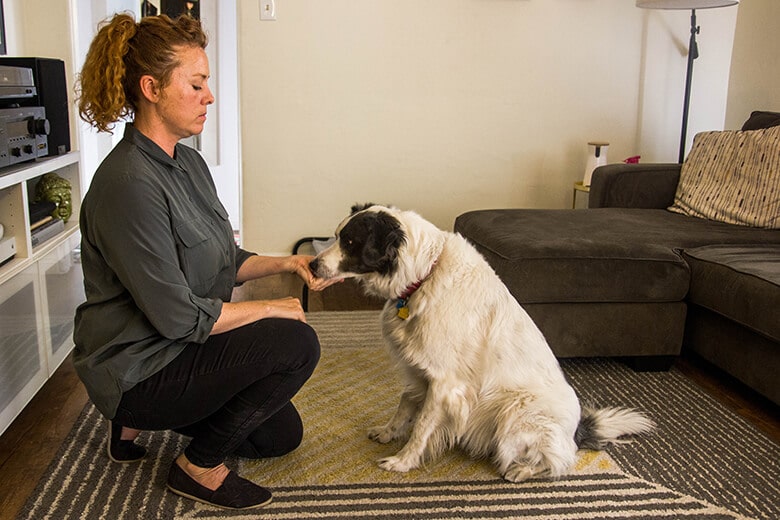
Wait until your dog realizes you’re not going to open your hand, and she moves away. Then open your hand. This rewards/reinforces the first correct choice she has made.
Be patient. However, if your dog then rushes you to grab the treat, close your hand again. Eventually, your dog will understand that she has to choose a different response. The goal is to keep repeating this (open you hand when your dog moves away, close it when she rushes for the treat).
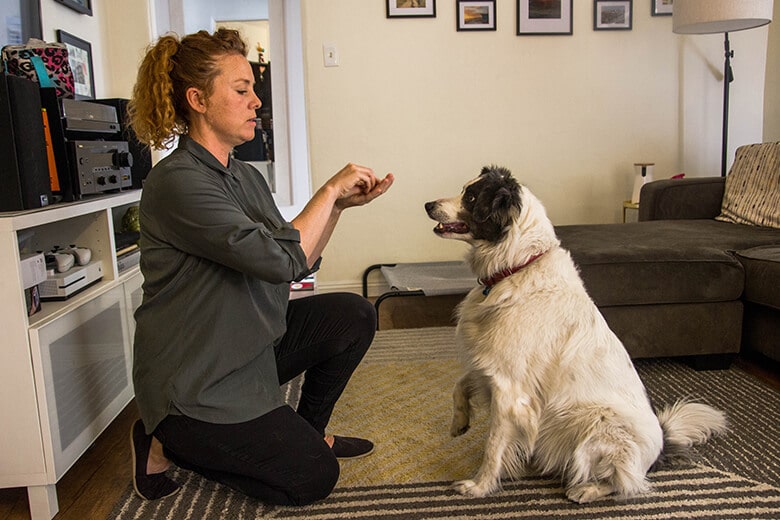
By controlling the consequences of your dog’s choices, she will eventually choose a different response. This means that you are only controlling the consequences, but your dog is controlling her impulses. The game ends when your dog doesn’t move when you open your hand. Ideally, your dog should be in a sitting position and paying attention to you by making eye contact.
Heap the praise. When this happens, use a verbal marker, like “good” or “yes.” If your dog moves towards you, close it back up in your fist. Your dog only gets the treat when you say good and move the treat toward her. If she waits for you to bring it to her, give her the reward.
Related: Decoding Your Dog’s Vocal Language: What Is She Trying to Tell You
This is the first step to teaching your dog self-control. It’s a skill that is necessary for her to learn to be able to choose other desirable behavior.
Why It Works
“This method helps a dog understand the value of a behavior on a much deeper level than with other forms of training because the process engages a dog’s natural problem-solving abilities and turns them into a ‘thinking dog,’” says Bassett. “This is why it is also referred to as ‘manners training,’ because it teaches a dog to choose to adopt polite behaviors in the presence of something it wants and around exciting distractions.”
This method is fundamentally different from typical “lure and reward” training, says Bassett. This training works by using a treat to lure a dog into a position. For example, the treat is held in the fist, shown to the dog, then moved close to the dog’s head, up and over. The dog’s nose follows the treat, which automatically causes her body to sit.
While this technique works, the problem results when the trainer tries to get the same result without using a treat. “Because the dog does not have to think or problem solve during the training process, this approach often leads to a dog looking their owner up and down to see if they have a treat on them before deciding whether or not to perform a requested behavior,” she explains. If there’s no treat, the dog may decide that it’s not worth it to comply.
One of the most crucial elements of training a dog is to establish boundaries and to learn how to correct a dog “benignly” when they don’t get something right, says Bassett. “With a game-based approach, dog guardians are also learning how their dog learns and how to either provide reinforcement for a desirable behavior or take reinforcement away for undesirable behaviors — and to manage their dog properly to prevent the development of undesirable behaviors.”
When dog owners fail to learn how to do this, it results in dogs that don’t understand what behavior is appropriate and what behavior is not. Their dogs have too much freedom and often behave badly, or owners are too strict or harsh, and their dogs live in fear of punishment.
By giving your dog the choice to offer desirable behavior, and rewarding her when she chooses correctly, your dog learns naturally, trusts you completely, and develops into a happy confident dog that is always a pleasure to be around.
You can read more in this booklet from Bassett.
Related: The Rules of The Game: How to Keep Your Puppy Safe During Playtime














